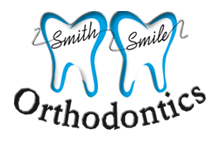Orthodontic Appliances
Carriere Motions
The Carriere Motion "3D Class II Correction Appliance" is attached across multiple teeth and allows us to provide an even, gentle force and more easily correct overjet. With consistent rubber band wear, we can shorten treatments by up to four months.
Headgear
Headgear is often used to correct an excessive overbite. This is done by placing pressure against the upper teeth and jaw, which would hold the teeth in position or help move them into better positions. The severity of the problem determines the length of time headgear needs to be worn. The key to success with your headgear appliance is consistency. Headgear should never be worn while playing sports and should also be removed while eating or brushing your teeth.
Herbst
The Herbst appliance prevents the lower jaw from moving backward but allows opening and closing movement to occur easily. At first, your mouth will feel unusually full, and speaking will be awkward. But if you practice reading aloud, your ordinary speech will return quickly. You may also notice more saliva than normal, but this will decrease as you become accustomed to the appliance. Patients will not have any problems learning to chew their food with their lower jaw in this new position. As with all kinds of braces, patients with Herbst appliances need to be careful about what they eat. Your Herbst appliance will be checked and adjusted at your appointments. If, sometimes between appointments, you develop some sore areas on the inside of your cheeks, please do not try to adjust the appliance yourself. Call for an appointment so that the necessary adjustments can be made.
Mouthguards
Custom-fabricated mouthguards for sports activities are designed to accommodate many possible wearers. Our sports mouthguards are tailored to fit your exact dental profile, providing the highest attainable level of comfort and security in a mouthguard. The first step in fabricating these mouthguards is to take an impression of your teeth. We then use that impression and fabricate the mouthguard using special professional-grade materials. The perfect fit of these custom-fabricated mouthguards ensures they fit comfortably and will not interfere with speech or breathing.
Rapid Palatal Expanders
Attached to the upper molars through bonding or by cemented bands, the Rapid Palatal Expander (RPE) is an orthodontic device used to create a wider space in the upper jaw. It is typically used when the upper jaw is too narrow for the lower jaw or when the upper teeth are crowded or blocked out of the dental arch. When patients are still growing, their connective tissue between the left and right halves of their upper jaw is very responsive to expansion. By simply activating the expander through turning a screw in the center of the palatal expander with a special key we provide, gradual outward pressure is placed on the left and right halves of the upper jaw. This pressure causes an increased amount of bone to grow between the right and left halves of the jaw, ultimately resulting in increased width.
TADs
TADs are miniscrew anchors which are inserted into specific places in the mouth to be used as a fixed point from which teeth can move. Before TADs, orthodontists who wanted to move some teeth while keeping others still, or to achieve orthodontic movement in a mouth with missing teeth, had to rely on headgear for their fixed point. But TADs now provide an option for that fixed point that is smaller, more discrete, more efficient and requires significantly less work for the patient.
Thumb/Finger Appliance
Sucking is a natural reflex that relaxes and comforts babies and toddlers. Children usually cease thumb sucking when the permanent front teeth are ready to erupt. Typically, children stop between the ages of 2 and 4 years. Thumb sucking that persists beyond the eruption of primary teeth can cause improper growth of the mouth and misalignment of the teeth. One solution to thumb sucking is an appliance called a "fixed palatal crib." This appliance is put on the child's upper teeth by an orthodontist. It's placed behind the upper teeth on the roof of the mouth. The crib consists of semicircular stainless steel wires that are fastened to molars using steel bands. The stainless steel wires fit behind the child's upper front teeth, and they are barely visible. The crib usually stops the habit of thumb sucking within the first day of use.
Tongue Thrusting Appliance
Tongue thrusting occurs when the patient presses his or her tongue against the front teeth, usually when swallowing, speaking or resting the tongue. If thrusting is constant, this can cause problems with teeth alignment and must be fixed. We prefer to correct tongue thrusting by giving patients a tongue thrusting appliance. This appliance, similar to a mouth guard, is usually worn at night. Other times, a more permanent appliance is prescribed and can be only be adjusted by our office.
